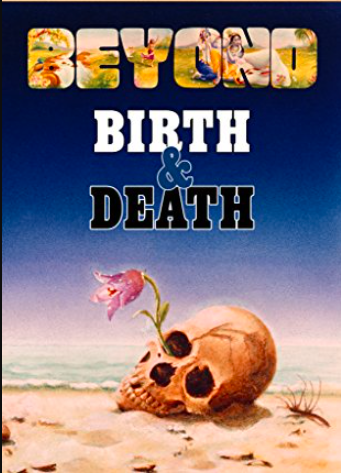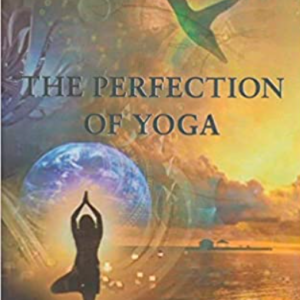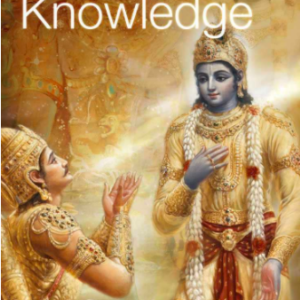Description
Beyond birth and death: Startling evidence of the soul’s incredible journey after death.
An increasing number of people believe in reincarnation. Reincarnation means leaving this body and accepting a new one, over and over again . But reincarnation does not have to remain an eternal reality. This powerful book will give you knowledge to help you break the cycle of reincarnation.
We often think of “life” as a relatively short span of time in between our birth and our death—we celebrate birth as “coming into life” and mourn for the “dead”—when in fact life is an unending continuum, and what we call “birth and death” are merely bodily changes.
This is Krishna’s beginning instruction in the Bhagavad-gita; for the self there is neither birth nor death. We’re all eternal spiritual beings, meant to live eternally in relationship with the Supreme Person. The joy we experience once we understand the difference between our self and our material covering cannot be overestimated.
Beyond Birth and Death was prepared from transcripts of lectures Srila Prabhupada gave in 1966 on the second and eighth chapters of the Bhagavad-gita.
Table of Contents of Beyond Birth and Death:
-
-
BBD 1: We Are Not These Bodies
-
BBD 2: Elevation at Death
-
BBD 3: Liberation from Material Planets
-
BBD 4: The Sky Beyond the Universe
-
BBD 5: Associating with Krsna
The very first step in self-realization is realizing one’s identity as separate from the body. “I am not this body but am spirit soul” is an essential realization for anyone who wants to transcend death and enter into the spiritual world beyond. It is not simply a matter of saying “I am not this body,” but of actually realizing it. This is not as simple as it may seem at first. Although we are not these bodies but are pure consciousness, somehow or other we have become encased within the bodily dress. If we actually want the happiness and independence that transcend death, we have to establish ourselves and remain in our constitutional position as pure consciousness.
Living in the bodily conception, our idea of happiness is like that of a man in delirium. Some philosophers claim that this delirious condition of bodily identification should be cured by abstaining from all action. Because these material activities have been a source of distress for us, they claim that we should actually stop these activities. Their culmination of perfection is in a kind of Buddhistic nirvāṇa, in which no activities are performed. Buddha maintained that due to a combination of material elements, this body has come into existence, and that somehow or other if these material elements are separated or dismantled, the cause of suffering is removed. If the tax collectors give us too much difficulty because we happen to possess a large house, one simple solution is to destroy the house. However, Bhagavad-gītā indicates that this material body is not all in all. Beyond this combination of material elements, there is spirit, and the symptom of that spirit is consciousness.
Consciousness cannot be denied. A body without consciousness is a dead body. As soon as consciousness is removed from the body, the mouth will not speak, the eye will not see, nor the ears hear. A child can understand that. It is a fact that consciousness is absolutely necessary for the animation of the body. What is this consciousness? Just as heat or smoke are symptoms of fire, so consciousness is the symptom of the soul. The energy of the soul, or self, is produced in the shape of consciousness. Indeed, consciousness proves that the soul is present. This is not only the philosophy of
Bhagavad-gītā but the conclusion of all Vedic literature.
The impersonalist followers of Śaṅkarācārya, as well as the Vaiṣṇavas following in the disciplic succession from Lord Śrī Kṛṣṇa, acknowledge the factual existence of the soul, but the Buddhist philosophers do not. The Buddhists contend that at a certain stage the combination of matter produces consciousness, but this argument is refuted by the fact that although we may have all the constituents of matter at our disposal, we cannot produce consciousness from them. All the material elements may be present in a dead man, but we cannot revive that man to consciousness. This body is not like a machine. When a part of a machine breaks down, it can be replaced, and the machine will work again, but when the body breaks down and consciousness leaves the body, there is no possibility of our replacing the broken part and rejuvenating the consciousness. The soul is different from the body, and as long as the soul is there, the body is animate. But there is no possibility of making the body animate in the absence of the soul.
Because we cannot perceive the soul by our gross senses, we deny it. Actually there are so many things that are there which we cannot see. We cannot see air, radio waves, or sound, nor can we perceive minute bacteria with our blunt senses, but this does not mean they are not there. By the aid of the microscope and other instruments, many things can be perceived which had previously been denied by the imperfect senses. Just because the soul, which is atomic in size, has not been perceived yet by senses or instruments, we should not conclude that it is not there. It can, however, be perceived by its symptoms and effects.
If you have any doubts in the quest of spiritual progress, please ask our experts at 9738769587 or 9740603910 or email at contactus@divyamayayoga.com







Reviews
There are no reviews yet.